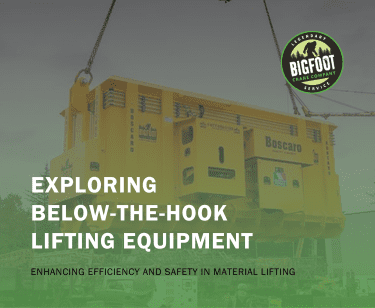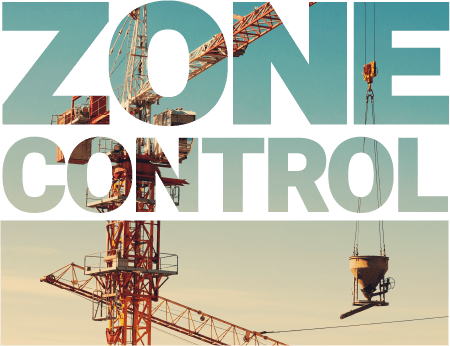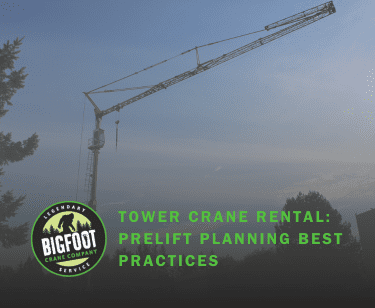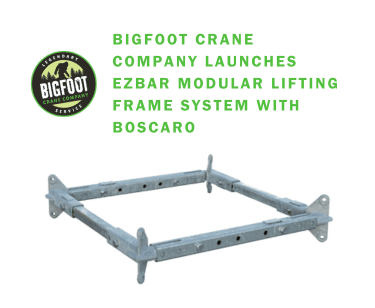Enhancing Efficiency and Safety for Underhook Accessories
When it comes to the efficient and safe transportation of heavy loads in construction and industrial settings, below-the-hook lifting devices play a crucial role. These devices are designed to attach to cranes and hoists, providing a secure and reliable method for moving various materials. This comprehensive guide will explore the different types, applications, and standards of below-the-hook lifting devices. Whether you are a construction site manager, an operations manager, or involved in any industry that requires material lifting, this article will provide valuable insights to help you enhance efficiency and safety in your lifting operations.
Section 1: Understanding Below-the-Hook Lifting Devices
Below-the-hook lifting equipment are attachments that connect to the chain hoist or crane hook to lift and transport loads. These devices are essential when traditional chain slings or hardware are not sufficient to ensure safe and secure material movement. According to the American Society of Mechanical Engineers (ASME), a below-the-hook lifting device is defined as ”a device used for attaching a load to a wire rope hoist, which may contain components such as lifting slings, hooks, and rigging hardware.”
Components of Below-the-Hook Lifting Equipment
It is important to familiarize yourself fully with the typical components to understand below-the-hook lifting devices. These devices are crucial in material handling and crane operations involving various elements. Knowing these components is essential for ensuring the safe and efficient use of below-the-hook lifting equipment.
By gaining knowledge about these devices’ construction and specific functions, users can enhance their proficiency in employing them. This understanding proves invaluable in promoting workplace safety, optimizing lifting procedures, and preventing potential hazards associated with lifting and handling heavy-duty loads. These components include:
- Bail: The bail is the pivotal attachment point where the crane hook engages during lifting operations. This crucial component comes in two predominant styles: plate-style and pin-style. The choice between these styles depends on the unique lifting requirements of the task at hand.
Plate-style bails feature a broad, plate clamps design for secure hook attachment, while pin-style bails utilize a pin mechanism for connection. Understanding the distinctions between these bail styles is fundamental for operators and riggers, as it enables them to make informed decisions, ensuring the proper configuration for safe and effective heavy lifting in diverse scenarios.
- Lifting Lug: A lifting lug is a designated attachment point on a lifting device that helps connect rigging equipment through shackles or hooks. This important component is carefully positioned to ensure a secure and reliable link between the lifting apparatus and the rigging gear. Operators can improve efficiency and safety in material handling tasks by using a lifting lug.
The lug serves as a stable anchor for connecting the rigging equipment, enabling precise control during lifting operations. It is crucial to understand the role and proper usage of lifting lugs to promote effective load management and prevent potential hazards associated with lifting heavy loads.
- Gusset: A gusset plays a pivotal role in strengthening lifting devices, functioning as a reinforcing plate welded onto specific areas that undergo intense stress or frequent usage. This welded addition is strategically positioned to fortify the structural integrity of the device, enhancing its durability and load-bearing capabilities.
Gussets contribute to the overall stability and safety of the lifting cargo by reinforcing critical stress points, mitigating the risk of structural failure. Operators and rigging professionals rely on gussets to bolster the resilience of lifting devices, ensuring they withstand demanding conditions and maintain optimal performance throughout various material handling tasks.
- Latch: A latch serves as a pivotal component in lifting and rigging equipment, designed to securely hold a lifter in either an open or closed position. This mechanism plays a crucial role in maintaining the stability and safety of the lifting operation by preventing unintended movements.
Whether securing the lifter in an open configuration for load attachment or closed for safe lifting, the latch ensures a reliable and controlled lifting process. The proper functioning of this device is essential for preventing accidents and guaranteeing the secure handling of loads, highlighting the significance of latches in enhancing the overall safety and efficiency of lifting operations.
Types of Below-the-Hook Lifting Devices
Below-the-hook lifting devices come in various types, each designed to handle specific load characteristics and lifting requirements. Some common types of below-the-hook lifting devices include:
Concrete buckets
Concrete buckets are essential tools in the construction industry, designed for efficient transport and placement of concrete in various construction projects. These buckets are typically made from durable materials and can withstand heavy-duty use on construction sites. They come in various sizes, catering to project requirements, and may feature diverse discharge mechanisms for precise pouring.
Some buckets, like the Boscaro Hydraulic Concrete Buckets, offer advanced features such as remote control operation, allowing for increased flexibility and enhanced safety during concrete placement. The equipment ensures even concrete distribution, contributing to the uniformity and quality of the construction process. With considerations for safety, strength, and adherence to industry standards, concrete buckets play a crucial role in optimizing the efficiency of concrete handling, making them indispensable tools for construction professionals seeking reliable and versatile solutions for their projects.
Spreader Bars
Spreader bars are useful tools in the construction and lifting industry, designed to facilitate the safe and efficient handling of heavy loads. The EZ™ Spreader Bar Systems by Boscaro exemplify the cutting-edge advancements in this equipment. Available in various sizes, from 1.31 m 4 to 10 34, these modular spreader bars boast lifting capacities of up to 110 t (242,506lbs). Their compliance with ASME standards ensures adherence to stringent safety regulations, eliminating the need for a diverse assortment of bars.
The innovative design of Boscaro’s EZ™ Spreader Bars features male and female interlocking components, offering versatility with multiple configurations. Users can utilize each section independently or combine them to create an adjustable spreader bar with 1 foot increments. Galvanized for durability, these bars are robust and easily transported, assembled, and stored, contributing to overall job site efficiency. The flexibility of these spreader bar s is complemented by their commitment to customer satisfaction, addressing unexpected cost fluctuations amid changing steel prices.
Self Dumping Bins
Self-dumping bins are essential tools in material handling, providing a seamless solution for efficient and safe disposal of bulk materials. Boscaro’s Self-Dumping Bins, exemplified by the A-D Series, stand out with features designed to optimize load monitoring. These bins cater to diverse project needs, ensuring versatility in various industries, offering 10 standard sizes and 6 customizable options. Our construction series bins range from 200 litres (.26 cu yd) and 400 kg (881 lb) capacity, all the way to 3,000 litres (3.92 cu yd) and 6,000 kg (13,228 lb) capacity. If you are looking for larger self dumping bins our industrial series can hold a max of 10,000 litres (13.07 cu yd) and 20,000 kg (44,092 lb).
Engineered for hands-free unloading, these bins enhance productivity by streamlining material disposal and minimizing manual labour. Compliance with ASME standards underscores their commitment to safety and performance, making them suitable for a wide range of applications. The bins are crafted with 100% welded stainless steel construction, ensuring durability, strength, and longevity, suitable for rugged industrial environments. The powder-coated finish adds resilience against corrosion, ensuring lasting functionality and a polished appearance. With larger units [Industrial Series Self-Dumping Bin] featuring dual pick points, these self-dumping bins provide flexibility in handling and secure lifting, making them indispensable for construction sites, warehouses, and diverse material-handling applications.
Pallet Forks
Pallet Forks are essential tools in material handling, offering efficiency and versatility in various industries. Boscaro’s Auto Leveling Pallet Forks exemplify cutting-edge design and functionality. With four models, ranging in capacity from 1,500 kg (3,300 lbs) to 3,000 kg (6,613 lbs), these pallet forks have an internal spring system that automatically levels the load during lifting operations. The telescopic vertical riser and adjustable sliding forks provide adaptability in width and height, catering to various material handling needs.
Weighing in on the benefits of lightweight construction, these forks maximize lift capacity, ensuring optimal utilization of crane resources. Certified for safety and compliance with ASME standards, Boscaro’s pallet forks come with the necessary documentation, guaranteeing their suitability for use within North America. Elevate your material handling efficiency with Boscaro’s Pallet Forks, where advanced technology meets safety and compliance standards.
Crane Man Baskets
Crane Man Baskets are specialized platforms designed for safely and efficiently lifting personnel using overhead cranes. Boscaro’s Crane Man Baskets are a pinnacle in personnel lifting solutions, offering a blend of safety, versatility, and compliance. Engineered to meet diverse job conditions, these baskets feature a distinctive design with a removable roof, seamlessly allowing the flexibility to switch between an enclosed or open-top configuration. This innovative approach effectively offers two crane baskets in one, catering to the dynamic needs of various lifting operations.
A standout feature is incorporating the EZ Test Weight system, ensuring simplicity in attaching and detaching for efficient ASME/OSHA site testing. Compliant with ASME’s Personnel Lifting regulations, including the emergency rescue platform, these crane baskets are approved for North American use. Their adherence to ASME standards guarantees compliance with OSHA regulations, establishing them as a reliable and safe choice for personnel lifting operations. With Boscaro’s Crane Man Baskets, prioritize safety and functionality, ensuring optimal performance in lifting tasks and emergencies.
Propane Bottle Carriers
Propane bottle carriers are specialized devices designed to handle propane gas bottles safely and efficiently on construction sites or industrial settings. For instance, Boscaro’s PB-2BF Propane Bottle Carrier is a versatile solution with a 453 kg (1,000 lbs) capacity. These carriers are crafted to hold two gas bottles up to 31″ in diameter or multiple smaller variants. Their stackable design allows for space-saving storage, and a fold-down ramp facilitates easy loading and transport.
Key Features
- 453 kg (1,000 lbs) capacity
- Flyable and Stackable design providing flexibility
- Compatible with many bottles sizes
- Fold down ramp
- Safety Measures
- Meets or exceeds all ASME Standards
- Durable powder-coated finish
- Proven for safety, strength, and longevity
- 100% Welded steel construction
Hydraulic Clamshell Buckets
Hydraulic Clamshell Buckets, exemplified by Boscaro’s A-400DR and A-800DR models, are advanced solutions in bulk material handling. These hydraulically operated buckets are integrated as large-volume transfer bins that can be used with tower, mobile, and gantry cranes.
With a remarkable service range of up to 30.5 m (100 ft), these buckets ensure precise remote control operation, eliminating the need for personnel within the operating area. Their adaptability shines in confined or space-restricted environments where temporary loading areas are unnecessary.
Lithium-ion battery power and controlled by a wireless remote, either from the crane cab or by designated personnel working with the crane operator, the Hydraulic Clamshell Buckets dumping mechanism facilitates offloading up to 30 m (100 feet) away from the bin. Certified to meet or exceed ASME standards, these buckets prioritize safety, strength, and longevity, ensuring compliance with industry regulations.
Material handling equipment
Material handling equipment comprises diverse specialized tools designed to facilitate the efficient movement, storage, and transportation of various materials across industries. They include:
- Material Handling Bins: These bins are designed for versatile use, providing a secure and organized solution for material storage and transport.
- Brick Handling Cages: Specifically crafted for the safe handling of bricks, these cages ensure secure transportation on construction sites.
- Mobile Cages: Offering mobility and flexibility, these cages facilitate the movement of materials within job sites or warehouses.
- Stacking Bins (CML and CMR): Engineered for efficient stacking, these bins optimize storage space and enhance organizational capabilities.
- Clamshell Buckets: A Clamshell Bucket streamlines loading and unloading processes which makes it ideal for bulk material transfer
- Circular Muck Buckets: Tailored for excavation and wet soil handling, these buckets provide a robust solution for construction and mining applications.
- Mortar Buckets: Specifically designed for the precise and controlled transport of mortar, ensuring accuracy in construction tasks.
- Jersey Barrier Grabber: This specialized attachment facilitates the safe and efficient handling of lock blocks and jersey barriers, enhancing productivity on construction sites.
Each component in this comprehensive lineup is crafted precisely, meeting or exceeding industry standards, ensuring safety, durability, and efficiency in material handling operations. Boscaro’s Material Handling Equipment offers tailored solutions to meet the diverse needs of construction, mining, and industrial applications.
Benefits of Below-the-Hook Lifting Devices
At Bigfoot Crane, our below-the-hook lifting devices are meticulously crafted by tradespeople for tradespeople, ensuring optimal performance and safety on construction and industrial sites. Our innovative designs, born from firsthand experience, cater to the unique challenges of lifting operations. Using below-the-hook lifting devices offers several benefits for construction and industrial operations. These benefits include:
- Enhanced Efficiency: These specialized devices enable rapid and precise positioning of loads, diminishing overall lifting time and enhancing productivity. Designed with a focus on load-specific requirements, they contribute to operational efficiency by providing a reliable and controlled means of lifting various materials. Incorporating below-the-hook lifting devices into material handling processes ensures increased productivity, making them integral tools in industries where precision and efficiency in lifting operations are paramount.
- Improved Safety: Below-the-hook lifting devices offer a secure and reliable method for lifting and transporting loads, enhancing safety in lifting operations. These devices ensure proper load balance, engineered with precision, mitigating the risk of accidents or load-related incidents. By incorporating below-the-hook lifting devices, workplaces benefit from increased safety measures, fostering a secure environment for material handling. The devices’ design and functionality prioritize load stability, giving operators confidence in their ability to handle diverse loads safely and efficiently.
- Customizability: Many below-the-hook lifting devices can be customized to suit specific lifting requirements. While manufacturers provide standard sizes and configurations, they also extend the option to design and construct custom lifting devices. This customization ensures the adaptation of lifting equipment to unique load characteristics or challenges, aligning with the diverse and specialized requirements of various industries. Tailored solutions enable more efficient and effective material handling processes, optimizing the performance of below-the-hook lifting devices in addressing specific demands within different operational contexts.
- Versatility: Below-the-hook lifting devices are available in various types, making them suitable for various lifting applications. Whether lifting coils, sheets, electric pallets, or other materials, these devices offer a tailored solution for many specific needs. The variety in types allows operators to choose the most appropriate below-the-hook lifting device based on the characteristics and requirements of the load, ensuring versatility in material handling across different industries and applications.
Section 2: Standards and Regulations for Below-the-Hook Lifting Devices
Manufacturers must adhere to industry standards and regulations to ensure the safety and reliability of below-the-hook lifting devices. The American Society of Mechanical Engineers (ASME) provides guidelines and standards for designing, testing, and inspecting below-the-hook lifting devices.
ASME B30.20 Standard
ASME B30.20 stands as the industry-accepted standard dedicated to below-the-hook lifting devices. This comprehensive standard meticulously outlines the essential requirements governing these crucial devices including:
- Design
- Construction
- Marking
- Testing
- Inspection
- Maintenance
This encompasses a wide range of below-the-hook lifting equipment, including hooks, rigging hardware, and lifting attachments, ASME B30.20 sets forth guidelines that ensure the safety, reliability, and efficiency of these devices in diverse industrial applications.
Manufacturers, operators, and riggers can establish a uniform and reliable framework for producing and utilizing below-the-hook lifting devices by adhering to this standard, contributing to workplace safety and regulatory compliance. ASME B30.20 plays a pivotal role in promoting best practices and ensuring the integrity of lifting operations, making it an indispensable reference within the industry.
ASME BTH-1 Standard
ASME BTH-1 emerges as a critical standard within the realm of below-the-hook lifting devices, complementing ASME B30.20. It Specifically centers on
- design categories
- service classifications
- safety factors
ASME BTH-1 offers comprehensive guidelines crucial for ensuring the safe and efficient use of these lifting devices. This standard delves into the determination of minimum safety factors, load ratings, and design requirements, providing a structured framework for manufacturers, operators, and riggers involved in the production and utilization of below-the-hook lifting equipment.
By adhering to ASME BTH-1, industry professionals can establish a consistent and reliable approach to cataloging, designing, and classifying below-the-hook lifting devices, contributing to enhanced safety standards and regulatory compliance across diverse industrial applications. The standard’s focus on safety factors and design considerations makes it an indispensable resource for promoting best practices in the field of below-the-hook lifting operations.
Compliance and Certification
Manufacturers of below-the-hook lifting devices are responsible for ensuring strict compliance with applicable standards and regulations. Conducting thorough testing and inspections is essential to guarantee the safety and reliability of their products. Certification from recognized bodies may also be necessary, providing evidence of adherence to industry standards. This commitment to compliance and certification not only demonstrates the manufacturer’s dedication to safety but also instill confidence in users and regulatory authorities, promoting the widespread adoption of reliable and secure below-the-hook lifting devices in various industrial applications.
Section 3: Choosing the Right Below-the-Hook Lifting Device
When choosing a below-the-hook lifting device, meticulously considering various factors is crucial to guarantee that the equipment aligns seamlessly with your distinct lifting needs. Our expertise in crafting under hook and below-the-hook accessories is deeply rooted in our identity as tradespeople, reflecting a profound understanding of the demands and nuances within various industries. Here are some key considerations.
Load Characteristics
When choosing a lifting device, start by evaluating the load’s attributes, encompassing weight, shape, size, center of gravity, and material type. Different below-the-hook lifting devices cater to specific load cell characteristics, emphasizing the need for meticulous selection. This ensures both the safety and efficiency of lifting operations, as the chosen device aligns with the load’s unique properties making it easy to operate. By attentively considering these factors, operators can make informed decisions, optimize material handling processes, and mitigate potential risks associated with lifting tasks.
Lifting Capacity and Safety Factor
Establish the necessary lifting capacity for your application, ensuring the selected below-the-hook lifting device can safely handle the load. Factor in the safety ratio, reflecting the relationship between the device’s ultimate strength and the intended working load. Adhering to industry standards specifying minimum safety factors for below-the-hook lifting devices is crucial. This meticulous consideration of lifting capacity and safety factors guarantees optimal performance, mitigates risks, and aligns with established safety guidelines, fostering a secure and efficient lifting environment.
Application and Environment
Evaluate the application and environment where the below-the-hook lifting device will operate. Account for variables like temperature, corrosive elements, and spatial limitations, which influence the appropriate lifting device choice. Confirm that the selected device aligns with the specific application requirements and possesses the durability to withstand environmental conditions, ensuring optimal performance and longevity in diverse operational settings.
Compliance with Standards and Regulations
Prioritize below-the-hook lifting devices that adhere to pertinent industry standards and regulations. Opt for certified devices with clear labels displaying relevant load ratings, safety information, and compliance markings. This diligence ensures the selected lifting device meets established safety criteria, promoting secure and compliant material handling operations. Certified equipment reinforces confidence in its reliability and adherence to industry standards, fostering a safe working environment and aligning with regulatory requirements.
Consultation with Experts
In instances of uncertainty, seek guidance from experts or specialized manufacturers in below-the-hook lifting devices. Relying on their expertise and experience, these professionals offer valuable insights and recommendations tailored to your specific requirements. Collaborating with experts ensures selecting the most suitable lifting device, addressing potential challenges and optimizing material handling solutions for enhanced safety and efficiency.
Conclusion
Below-the-hook lifting devices are essential tools for efficient and safe material lifting in construction and industrial settings. You can enhance efficiency and safety in your lifting operations by understanding the different types, applications, and standards associated with these devices. When selecting a below-the-hook lifting device, consider factors such as load characteristics, lifting capacity, application requirements, and compliance with industry standards. Choosing the right device and following best practices ensures you optimize your material handling processes and achieve greater productivity and safety.
Remember, quality and reliability are paramount for below-the-hook lifting devices. As the exclusive North American dealer for Boscaro equipment, Bigfoot Crane offers a wide range of high-quality below-the-hook lifting devices and crane attachments. Visit our website, www.bigfootcrane.com, to explore our extensive selection and find the perfect lifting accessories for your cranes and lever hoists.








